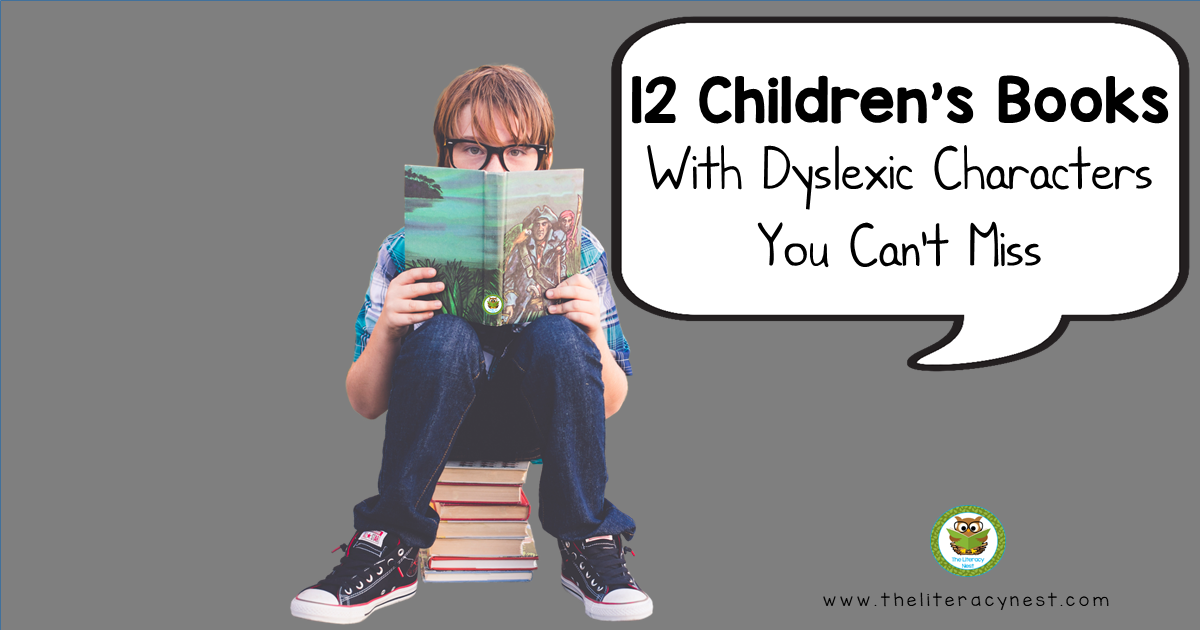6 Tips for Introducing Dyslexia to Your Child in a Positive Way
I am so thrilled to have Amy share tips for dyslexia advocacy with you today. Thank you so much Amy, from Mamabearmoms.com for sharing your expertise!
When parents think about dyslexia, they tend to focus on the negative because, let’s face it, school and dyslexia don’t tend to mix well together. In fact, a lot of the parents I work with find themselves hyper-focused on weakness, disadvantage and struggle because that is what they experience with their child on a daily basis.
It’s important to remember that dyslexic kids also have inherent strengths. Those who acknowledge their strengths and focus on developing them, tend to have higher self-worth and are far more hopeful about their future. Small hurdles for these kids do not prevent them from pushing forward, but rather, just become a factor of the journey.
- Set the Stage: While choosing what to say is vitally important, selecting the right location to talk with your child can set the stage for a positive discussion. For example, if your child tends to experience homework stress in a particular room of your home, choose a room that inspires feelings of calm and relaxation. If you struggle to find a space in your home that isn’t connected to stress, consider taking a walk with your child to a location that is free from distraction or association.
- Introduce Dyslexia to Your Child: When explaining dyslexia to your child, it is important to utilize the actual word “dyslexia” in your discussion. Children with dyslexia often think they are “stupid” because they can’t understand why it is so much harder for them to learn to read. Let your child know that his struggle has a name so he can associate his difficulties with the disorder rather his sense of self or his overall capability. Let him know that kids with dyslexia are just as smart as kids without dyslexia. They just learn differently! Having dyslexia may mean that reading will not come as easily, but it should not prevent your child from excelling in other areas of his life, such as sports, art or music.
- Work with the School to Help Your Child: After you have explained dyslexia to your child, the next step is to let him know what can and will be done to help him. Inform him that you will be working as a team with his teachers to create a plan called an Individualized Education Program (IEP), which will be designed to help him get the support and services he needs to be successful in school. He will also have the opportunity to work with teachers who are specially trained to teach him how to learn to read. Another way to help your child is to create a teacher cheat sheet that describes not only your child’s weaknesses, but also his strengths. Your child’s teacher will also benefit from knowing how to best motivate him to work through challenge.
- Offer Your Child Support at Home: Most importantly, your child needs to know that you are 100% behind him and will love him unconditionally. He needs to know that no matter what happens, you won’t give up on him. It’s important that he also know that if he needs your help with a task that is challenging for him, such as homework or reading a menu, that he can count on your judgment-free support and assistance. It is also essential that your child know that you encourage self-advocacy, but will also stand up for his needs. Children with dyslexia who experience unconditional love and support at home are far more successful than those who feel isolated or misunderstood.
- Explain Dyslexia to Siblings and Friends: Once your child understands why he struggles, he may need some support dealing with other family members and friends. As soon as he is ready to do so, help him explain to his siblings what it’s like to have dyslexia. Provide them with specific ways that they can offer support and allow them to be part of the solution and support structure. Your child may be hesitant to tell his friends about dyslexia, but that’s okay. Give him permission to keep that information to himself, but if he chooses to share, make sure he knows that there is no shame in having dyslexia. It just means that he learns a little differently.
- Anticipate the Future: When your child is experiencing the challenge of learning to read, it can feel as though a future that includes success is out of reach. Help your child identify with future potential by finding a dyslexic role model or celebrity who is successfully in a career that your child aspires to do someday. Many dyslexic celebrities have shared their stories online and have accomplished great things despite their struggles in school. Our son was particularly interested in becoming an astronaut at the time we learned of his diagnosis, so we researched famous astronauts and showed him the story of the dyslexic NASA astronaut, Pete Conrad. When our son realized that dyslexia did not prevent Pete from becoming an astronaut, it renewed his faith in himself and his options. It allowed him to see that the hurdles he encountered in school may slow him down a bit, but they don’t have to prevent him from reaching his goals.
The most important thing to remember is that your child needs to feel that you believe in him. Express confidence in knowing that he will be successful and make it known that you will be there to support him each step along the way. Your child may stumble several times along the journey, but if you assure him that you will never leave his side, he will be empowered to always take that next step forward.
Amy has created a free cheat sheet for parents to fill out and give their child’s teacher. I’m sure you are going to find it a very helpful tool to keep the lines of communication open with teachers and administration. Download your free Teacher Cheat Sheet today!
About The Guest Blogger:
Amy Ruocco is the mother of two, a dyslexia advocate and a fierce warrior for dyslexic children. Through her website MamabearMoms.com, she educates parents about the importance of early identification of dyslexia and teaches them how to advocate for appropriate interventions. To get access to her free guide, please visit https://mamabearmoms.mykajabi.com/p/is-my-child-at-risk
Be sure to read my post with suggestions for children’s books with dyslexic characters to help open up the lines of communication.









18 observing from the sidelines and correcting as needed and sending them back out there
4. Consultant – 18+ – relationship and parenting as needed or requested read more